Nationality American Known for Sculpture Role Artist | Name Duane Hanson Movement photorealism Periods Modern art, Photorealism | |
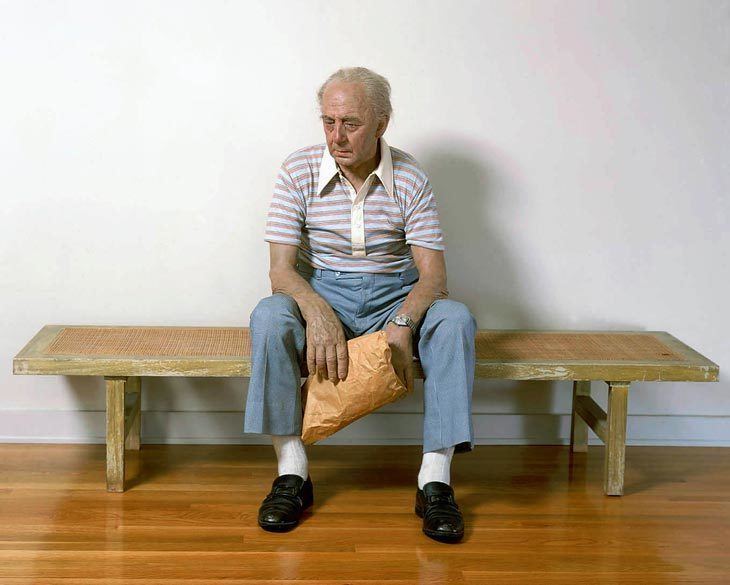 | ||
Born January 17, 1925 ( 1925-01-17 ) Alexandria, Minnesota Died January 6, 1996, Boca Raton, Florida, United States Artwork Tourists II, Woman Eating, Young Shopper Education University of Minnesota, Luther College, Macalester College, Cranbrook Educational Community Similar George Segal (artist), Carole Feuerman, Ralph Goings | ||
Otto le gardien de l art contemporain duane hanson house painter ii
Duane Hanson (January 17, 1925 – January 6, 1996) was an American artist and sculptor from Minnesota. He spent most of his career in South Florida. He was known for his lifecast realistic works of people. He casted in various materials, including polyester resin, fiberglass, Bondo, and bronze. His work is often associated with the Pop Art movement as well as hyperrealism.
Contents
- Otto le gardien de l art contemporain duane hanson house painter ii
- Radical portraits duane hanson and richard prince
- Education
- Career and style
- Exhibitions
- Collections
- References
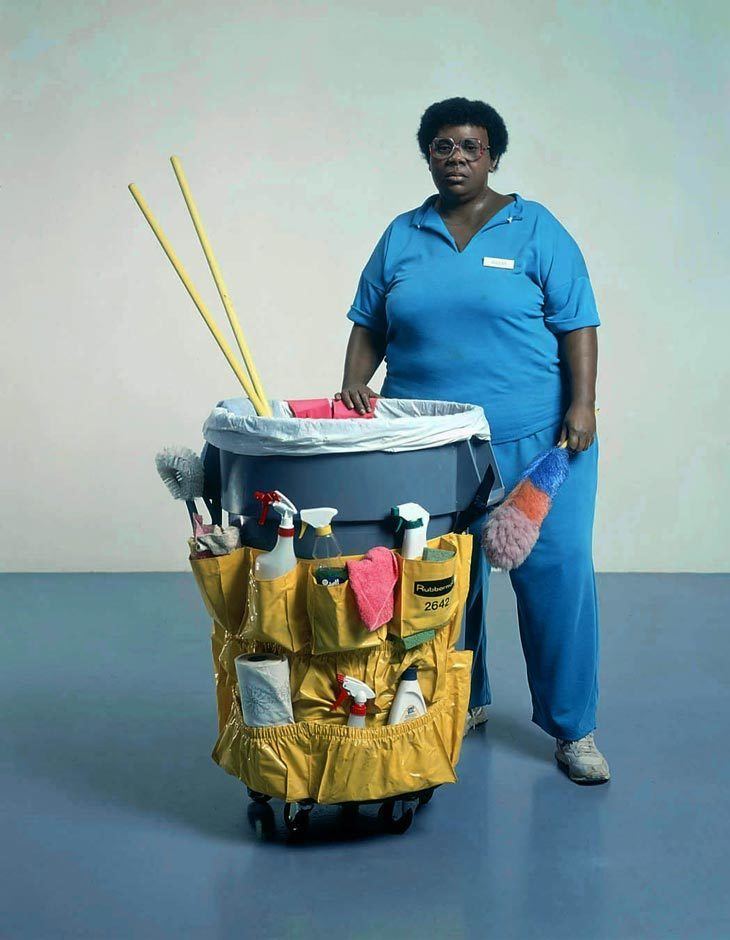
Radical portraits duane hanson and richard prince
Education
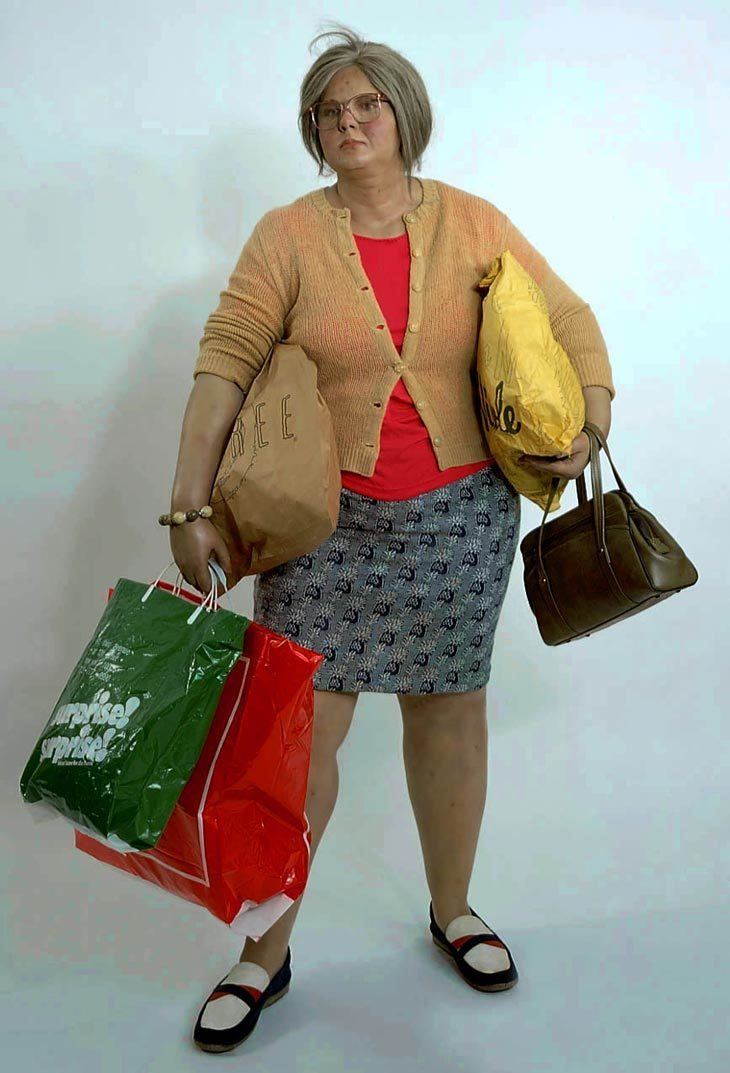
Duane Elwood Hanson was born January 17, 1925 in Alexandria, Minnesota. After attendance at Luther College and the University of Washington, he graduated from Macalaster College in 1946. Following a period where he taught high school art, he received a Master of Fine Arts degree from the Cranbrook Academy of Art in Bloomfield Hills in 1951.
Career and style
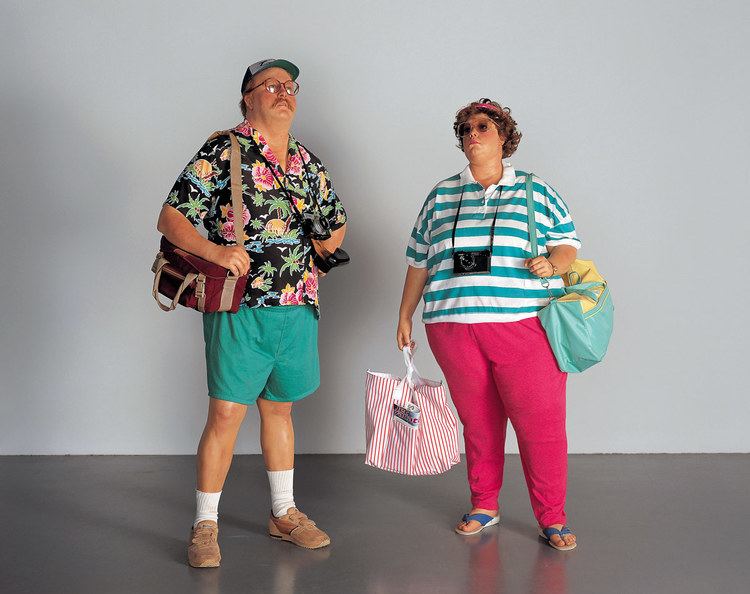
Around 1966 Hanson began making figural casts using fiberglass and vinyl. Works that first brought him notice were of figures grouped in tableaux, usually of brutal and violent subjects, somewhat similar to the work of Edward Kienholz. Hanson's Abortion (1966) was inspired by the horrors of an illicit backroom procedure, and Accident (1967) showed a motorcycle crash. Race Riot (1969–1971) included among its seven figures a white policeman terrorizing an African American man as well as an African American rioter attacking the policeman. Other works which dealt with physical violence or other explosive social issues of the 1960s were Riot (1967), Football Players (1969), and Vietnam Scene (1969).
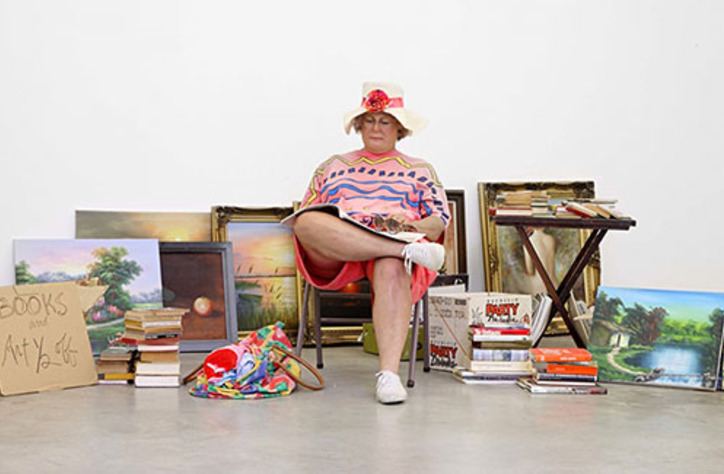
These sculptures, cast from actual people, were made of fiberglass, and painted to make the revealed skin look realistic, with veins and blemishes. Hanson then clothed the figures with garments from second-hand clothing stores and theatrically arranged the action. Clearly these works contained strong social comment, and can be seen as modern parallels to the concerns of 19th-century French Realists such as Honoré Daumier and Jean-François Millet, artists Hanson admired.
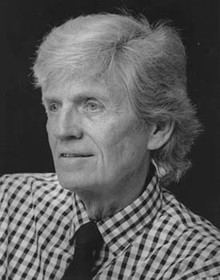
Few of Hanson's early sculptures would survive because he later destroyed many of them, preferring to be known for his more mature style.
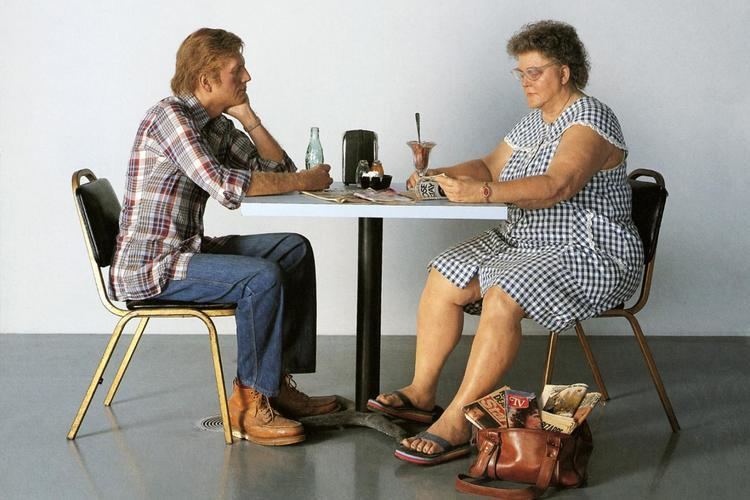
Around 1970, Hanson abandoned gut-wrenching scenes for more subtle, though no less vivid ones. In that year he made the Supermarket Shopper, Hardhat, and Tourists; Woman Eating was completed in 1971. These were also life-sized, clothed, fiberglass figures. Unlike the earlier works, however, these were single or paired figures, and not overtly engaged in a violent activity. Instead, his figures often had a listless, bored affect, staring into the distance and disengaged from their surroundings.
In 1967, art dealer Ivan Karp attempted to persuade Hanson to move from South Florida to New York City, and the artist moved to Manhattan in 1969. However, in 1973, Hanson moved back south, to Davie, Florida, where he would spend the remainder of his life.
While the earlier works tended to be more contained spatially, the later figures had no clearly defined boundaries separating them from the viewer. They quite literally inhabited the viewer's space—with amusing results at times, as in the cases of Reading Man (1977) or Photographer (1978). Hanson sometimes would cast his own children in his work, as in Cheerleader (1988), and Surfer (1987).
Although detractors may liken his work to figures in a wax museum, the content of his sculptures is more complex and subtly expressive than that normally found in waxworks.
Exhibitions
Selected solo exhibitions of Hanson's work include
Posthumous exhibitions:
Collections
The following collections hold sculptures by Duane Hanson:
